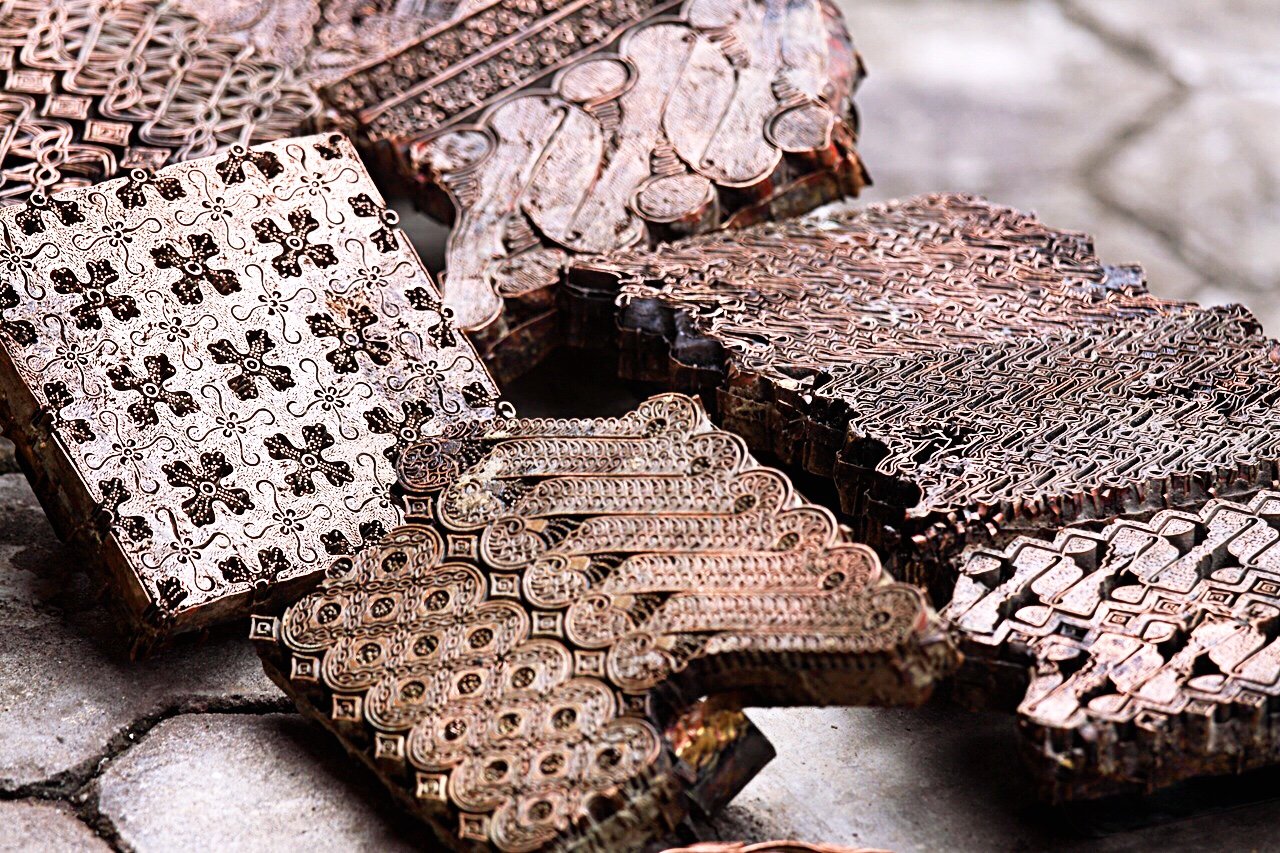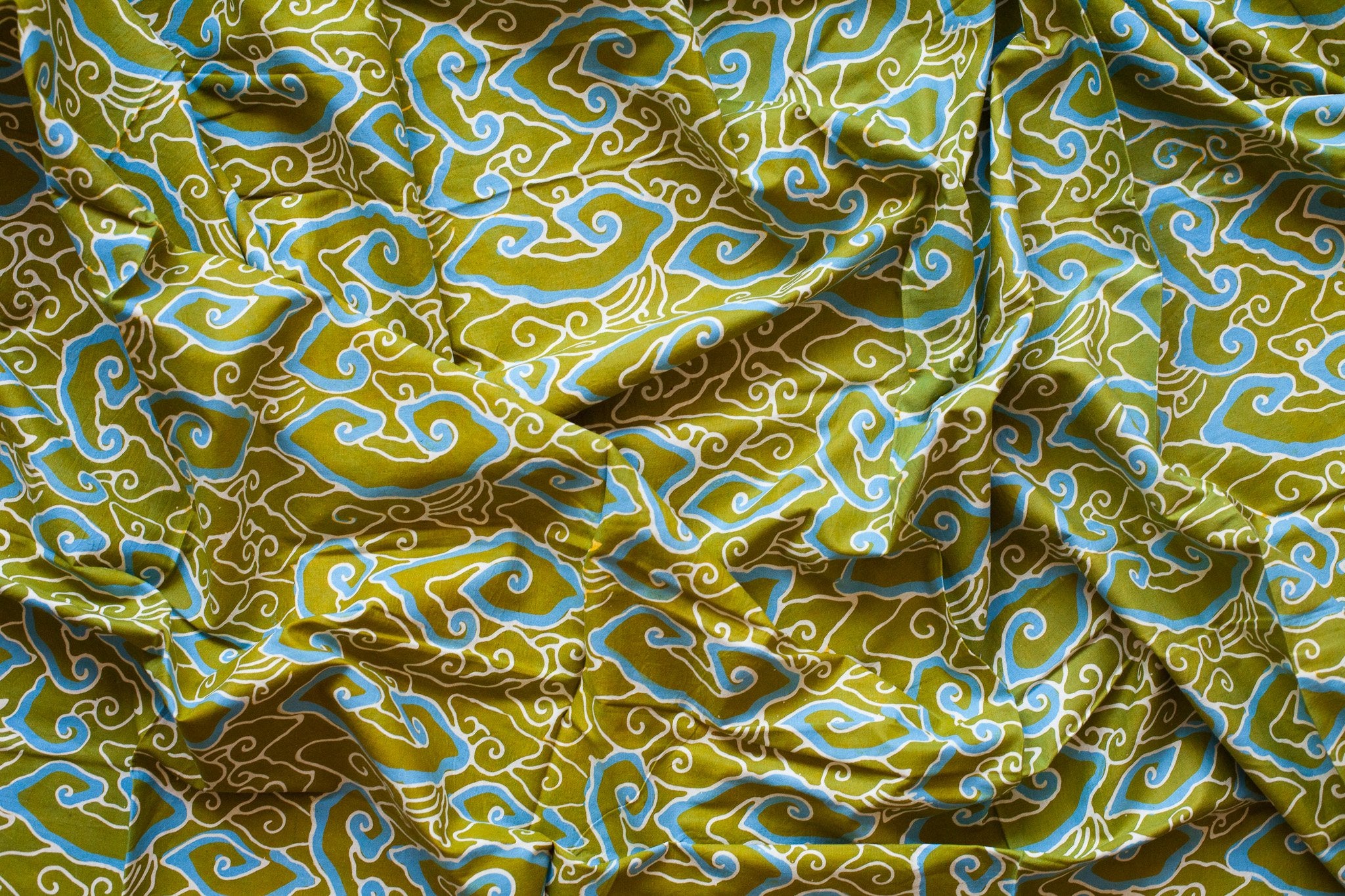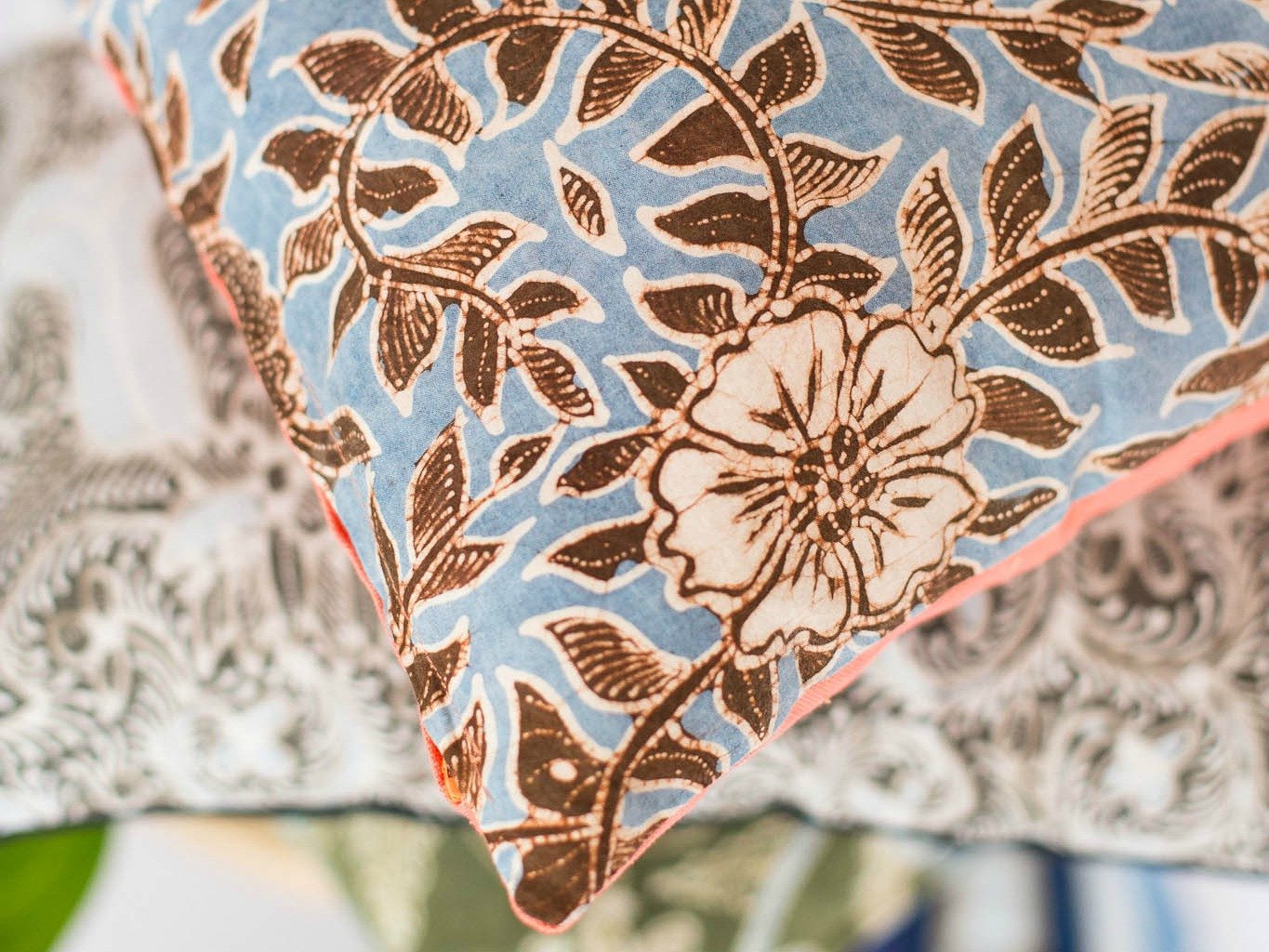The most celebrated and notable Batik come from the archipelago of Indonesia, and it is not that hard to see why. With hundreds of years in textile heritage and tradition, the inevitable passage of time sees Batik continuing to be a stronghold in the everyday lives of Indonesians today.
For the outsider, the array of colours and patterns expressed on Batik is a stunning visual treat and work of art to be admired. From age-old techniques to modern day machine-print, here are the four types of Indonesian batik every enthusiast should know of.
1. Block Printed

Copper batik hand stamps

It is said that the method of block printing textile came from India. With sea trade traced back to the 1600s, this method reached the archipelago and defined one of the oldest methods of making batik using intricately carved wood or copper hand stamps. A block printed batik is easily recognisable by the consistency in line, space and pattern.
2. Freehand Drawing

Drawing batik freehand with a canting

Freehand Batik or more commonly called Batik Tulis is considered the most prized of all Batik. Drawn with a template or free form, this technique is a reflection of the artisan's mastery in his craft. The finer the drawing, the more control the artisan has over his canting, the higher the value of the textile. The best freehand pieces cost thousands. Many of them become treasured heirlooms, passed down from one generation to the next eventually representing a mark of class and status.
3. Combination of Free Hand Drawing & Block Printing

The combination of both block print and freehand drawing is simply having the best of both worlds in one textile. Above, a piece of Javanese indigo Batik comprises of block printed parang print and freeform floral patterns.
4. Machine Printed Batik


Back when the sea trade route first began and for a long time after, Asian textiles were considered extremely valuable by sea traders of the West, even being used to barter for spices and daily necessities.
However with the emergence of technology and manufacturing, the Industrial Revolution in Europe saw the birth of machine-printed batik.
This method soon gained popularity for its ability to produce a higher yield of fabric in a shorter amount of time. What was once valued and held in high regard quickly became a commodity. Today, machine-printed batik are readily available off the shelves. It is easily recognisable by its distinct printed look — perfect lines, dots and bright colours.
How then does one tell between a machine-printed batik and a handmade one? Look out for these answers here.
Image credits:
Cover photo by Bruno Kvot
Freehand batik drawing by Raymond Tan
All other images are our own and subject to strict copyright regulations.




Comment
Definitely love hand drawn. I’ve done Batik with the the tjanting tool myself and it’s not easy at all !!! So much respect for these artisans :)